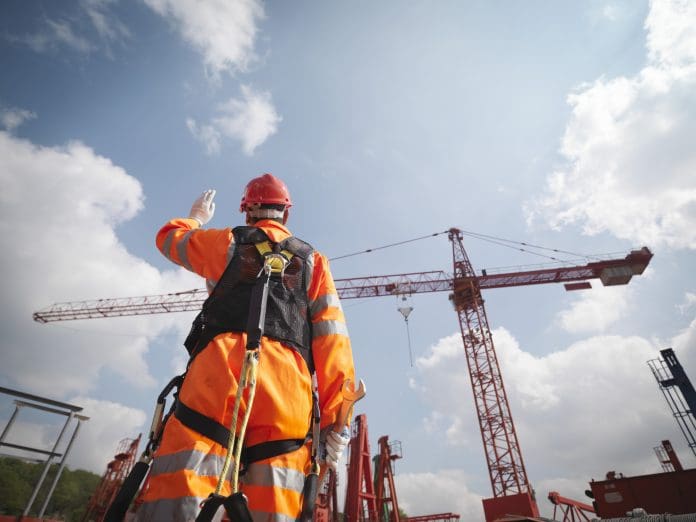Digitisation and remote monitoring technologies will be essential in fully maximising the efficiency gains and emissions reductions offered by new construction equipment and on-site energy mixes, writes Tom Adlington of Aggreko
According to November’s S&P Global UK Construction Purchasing Manager Index, the British construction sector had expanded for its ninth consecutive month.
More encouragingly for commercial construction stakeholders, November’s upturn was driven by the strongest rise in commercial work for two-and-a-half years. Alongside this, other market forecasts have been positive, with project work set to rise in the healthcare, office and retail construction subsectors over this year and 2026.
While this is encouraging for the medium to long term, the sector still faces significant and immediate pressures. Rising building material and labour costs are delaying project timelines and hindering future investments, and the energy-intensive nature of commercial projects remains a concern.
Balancing site sustainability and workloads
This apprehension over site energy costs revolves around the use of generators on construction sites. Specifically, the over- or under-specification of on-site power solutions can lead to inefficiencies from larger quantities of fuel being expended, straining project budgets.
These concerns were previously shown in Aggreko’s latest white paper report for the sector, A Perfect Storm for European Construction?, in which more than one in three UK construction managers surveyed said they had experienced issues with sizing equipment in 2024.
The need to adopt greener practices adds to an already complex situation, as environmental legislation such as low emission zones continue to impact and inform equipment specification.
As demand for sustainable site solutions grows, it is crucial for commercial construction project managers to remain up to date on the latest technologies, including Stage V generators and battery energy storage systems (BESS).
Yet as workloads increase, these already time-poor stakeholders may not have the resource needed to do so or find out more on how these innovations might reduce on-site emissions. Consequently, site decisionmakers may look to the supply chain for guidance as these potential knowledge or awareness gaps arise.
Crucially, all these technologies are flexible and modular when used on a hire basis, allowing for scalability based on site needs. If combined with well-informed specification advice, site stakeholders may be able to realise efficiency and emission reduction benefits on similarly rising scales, especially on more energy-intensive commercial construction projects.
Swift access to these technologies is even more vital given the increasing frequency of extreme weather events. This is underlined by findings from another of Aggreko’s white papers for the sector, Building in Resilience: Weatherproofing European Construction in a Changing Climate, in which 70% of UK construction managers surveyed said they had experienced major weather-related delays to projects in the last 12 months.
Given the threat these events pose to the industry, the importance of faster delivery of efficient utility provision solutions is even greater still.
The importance of data in site sustainability and management
Alongside incorporating sustainable energy solutions into on-site energy mixes, digitisation offers another route to reduce site carbon footprints. For example, adopting remote monitoring technologies is key.
Yet despite this, the wider supply chain has been slow to adopt these data-driven practices, with National Building Specification’s Biennial Sustainable Futures report indicating that while 70% of construction projects now include sustainability targets, a lack of data could hinder progress toward net zero. Addressing these issues is vital for reducing costs and lowering emissions.
Implementing a 24/7 remote monitoring system can improve efficiency and reduce emissions and fuel costs by giving project stakeholders greater levels of control over utility provision.
By tracking the health of battery energy storage systems and other assets remotely, services such as these can also help quickly identify potential performance issues before they lead to costly unplanned downtime.
Similarly, as site stakeholders can access all equipment monitoring data via an online hub, they are better placed to manage evolving project logistics in a more responsive fashion.
Perhaps most crucially, this also provides site managers with access to emissions reporting data on nitrogen oxides (NOx), particulate matter (PM) and hydrocarbons (HC), vastly simplifying the process of compiling sustainability reports for regulatory bodies.
Monitoring the future
In conclusion, commercial projects are helping drive the British construction sector’s continued recovery, painting a positive picture for the industry overall. However, financial pressures are a continuing concern in the short, medium and long term in such an energy-intensive sector.
Project managers that remain updated on the latest sustainable technologies and processes, including Stage V generators and BESS solutions, will be best placed to the impact of rising costs.
Yet to fully maximise efficiency gains and emissions reductions from new equipment in on-site energy mixes, digitisation and remote monitoring technologies are essential. With this two-pronged approach, the commercial construction sector can continue to thrive while adhering to decarbonisation timelines.














